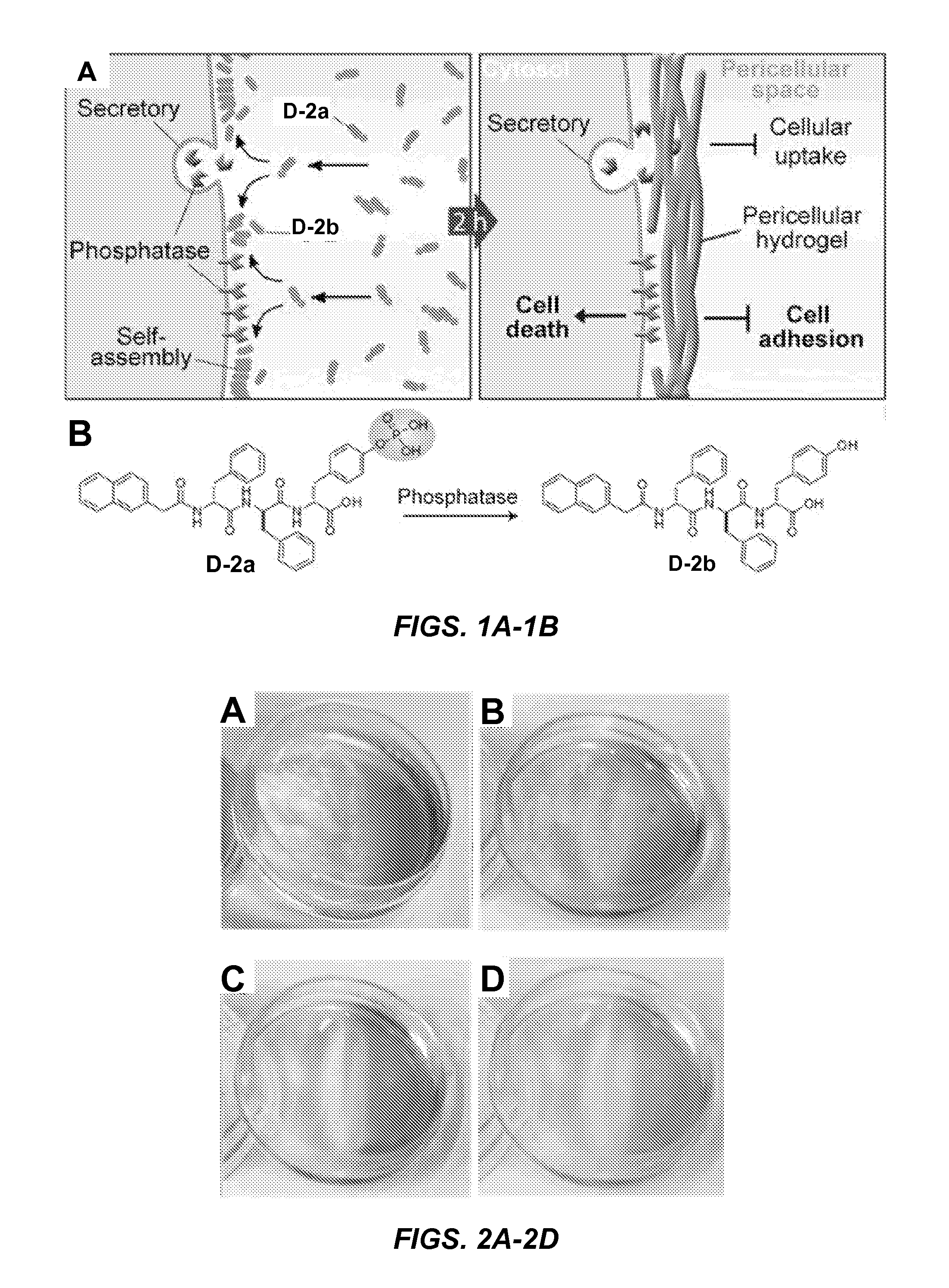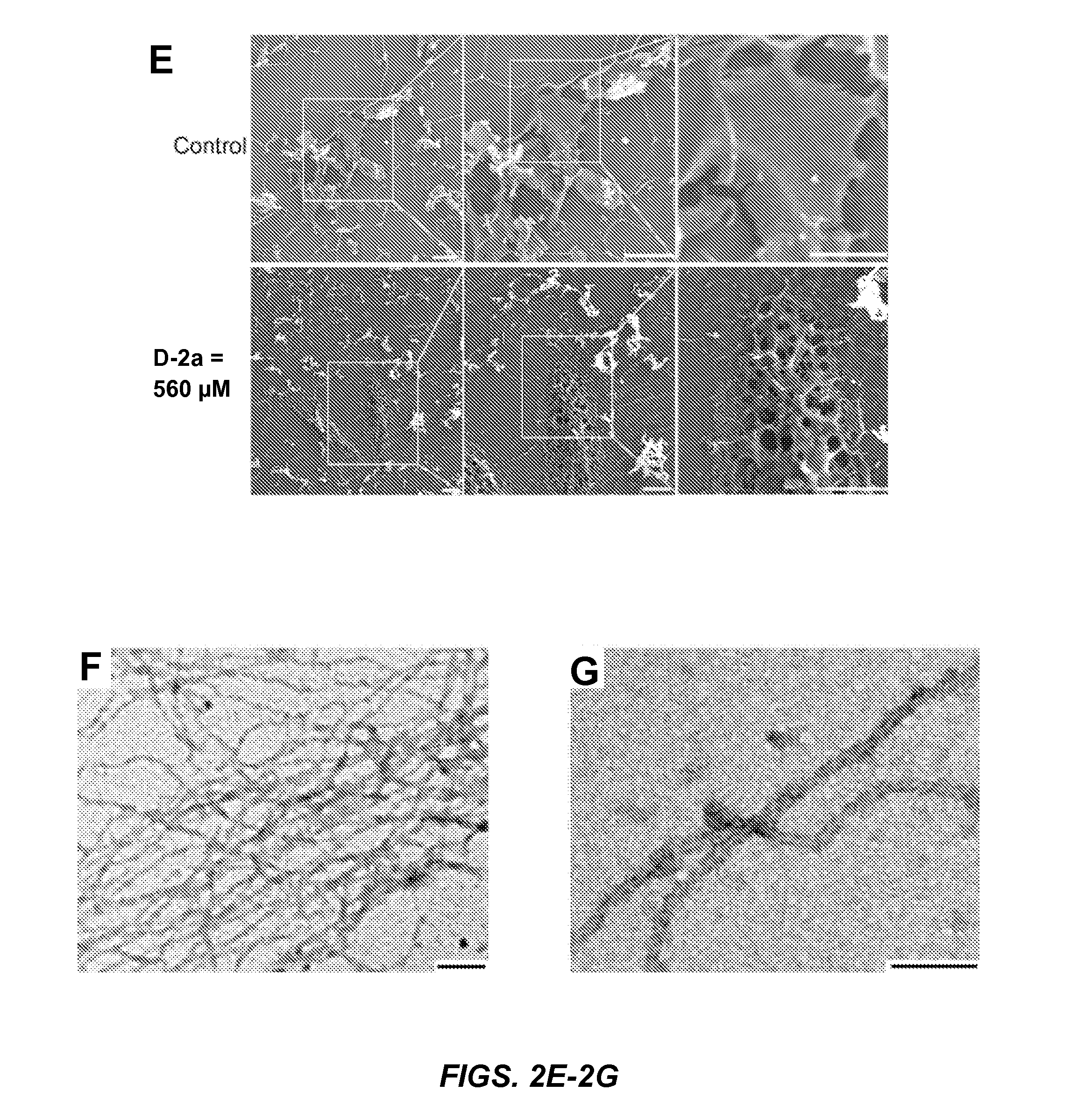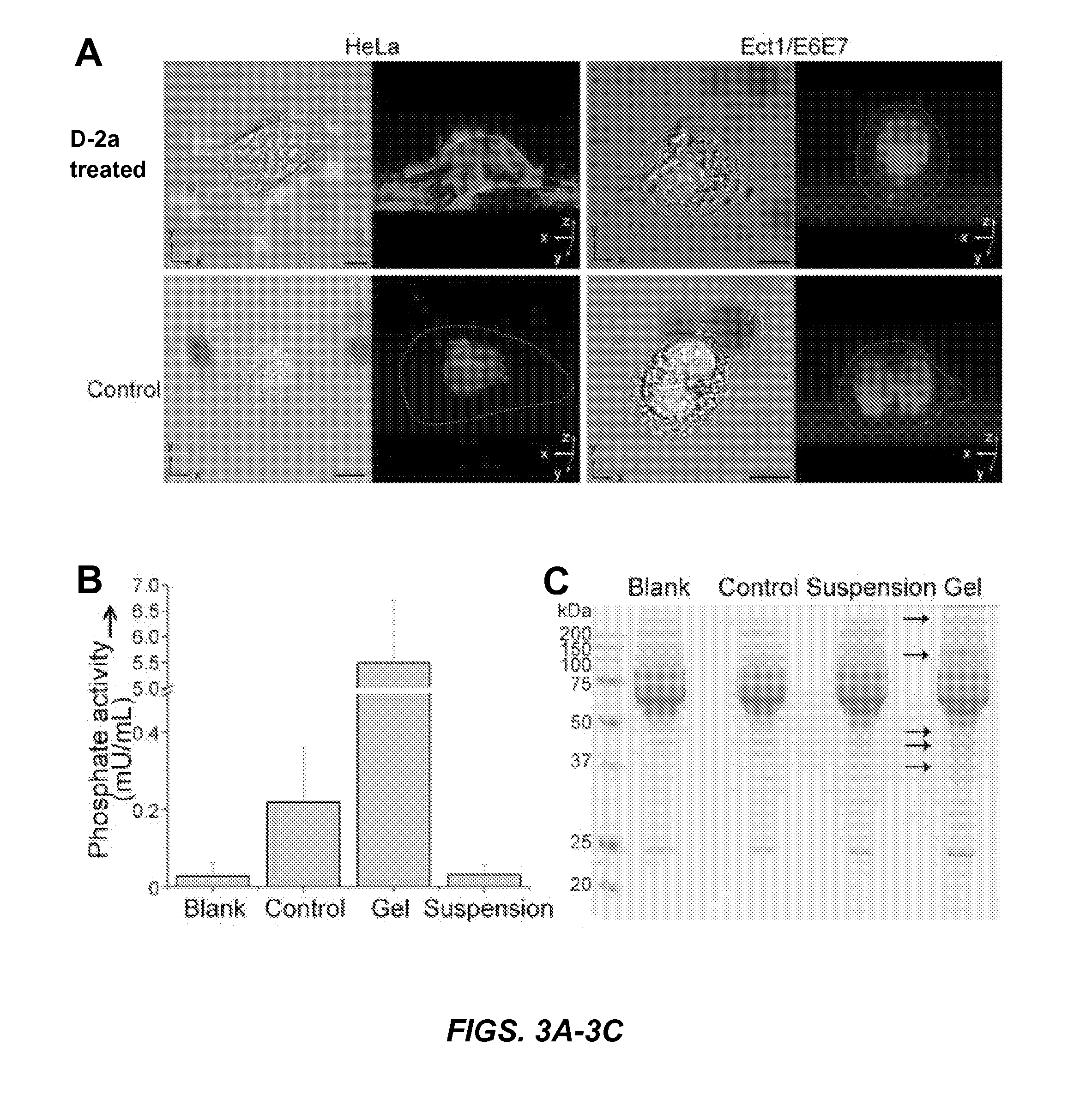Synthetic peptides, enzymatic formation of pericellular hydrogels/nanofibrils, and methods of use
- Summary
- Abstract
- Description
- Claims
- Application Information
AI Technical Summary
Benefits of technology
Problems solved by technology
Method used
Image
Examples
example 1
Phosphatase-Catalyzed Dephosphorylation of D-2a Results in Localized Self-Assembly of Pericellular Hydrogels / Nanonets on the Surface of Cancer Cells
[0143]Napthalene capped tripeptide precursor molecule D-2a and hydrogelator molecule D-2b, synthesized according to Yang et al. (Small 3:558-562 (2007), which is hereby incorporated by reference in its entirety), are comprised of the tripeptide D-Phe-D-Phe-D-Tyr (FIG. 1B). The D-Tyr of D-2a is phosphorylated (FIG. 1B). Alkaline-phosphatase (“ALP”) catalyzed dephosphorylation of precursor molecule D-2a (0.20 wt % / 2.77 mM) forms hydrogelator molecule D-2b (0.18 wt % / 2.77 mM), which self assembles to form the nanofibrils of a hydrogel.
[0144]Unexpectedly, treatment of a confluent layer of HeLa cells with either 560 or 280 μM D-2a (2 hours at 37° C.) results in the formation of a hydrogel-like soft material (hydrogel) on the cell surface (FIGS. 2A, 2B). Little hydrogelation was observed when cells were treated with 140 μM D-2a (FIG. 2C).
[0145...
example 2
The Phosphatase Gradient Promotes Dynamic Pericellular Hydrogelation
[0146]HeLa cell conditioned medium (“CM”) dephosphorylates D-2a to form D-2b nanofibrils. CM treated with either 560 or 280 μM D-2a for 48 hours completely transforms from a solution to a hydrogel (FIGS. 4A, 4B). Similar to experiments conducted with HeLa cells incubated with either 140 μM D-2a or 560 μM D-2b for two hours (FIGS. 2C-2D), CM containing either 140 μM D-2a or 560 μM D-2b fails to form a hydrogel following 48 hours of incubation (FIGS. 4C-4D). These results confirm that the secretory phosphatases present in HeLa cell conditioned medium are sufficient to convert D-2a to D-2b, thereby contributing to the formation of a hydrogel.
[0147]Since surface and secretory phosphatases are present on or near the cell membrane, the concentration of phosphatases is expected to be high in the pericellular space, resulting in the selective formation of pericellular hydrogels following incubation with D-2a. The homogenous...
example 3
Pericellular Hydrogels Consist of Networks of Nanofibrils which Form Nanonets
[0148]SEM reveals that the surface of the HeLa cells incubated with D-2a differs from the surface of untreated HeLa cells. Since the organic solvents traditionally used for cell fixation and washing cell monolayers (i.e., alcohol or acetone) destroy the supramolecular structure of the nanofibrils within the hydrogels, cell monolayer samples were instead freeze-dried for SEM analysis. While untreated HeLa cells exhibit a smooth surface (FIG. 2E, top), cells treated with 560 μM D-2a are covered in porous structures (i.e., nanonets) (FIG. 2E, bottom). Additionally, cells treated with 280 μM D-2a display fiber-like structures attached closely to the cell surface (FIG. 6). These results coincide with the pericellular hydrogelation observed on HeLa cells treated with 280 and 560 μM D-2a (FIGS. 2A, 2B).
[0149]Negative stained TEM of the pericellular hydrogel on HeLa cells treated with 280 μM D-2a reveals that the h...
PUM
| Property | Measurement | Unit |
|---|---|---|
| Molar density | aaaaa | aaaaa |
| Molar density | aaaaa | aaaaa |
| Molar density | aaaaa | aaaaa |
Abstract
Description
Claims
Application Information
 Login to View More
Login to View More - R&D
- Intellectual Property
- Life Sciences
- Materials
- Tech Scout
- Unparalleled Data Quality
- Higher Quality Content
- 60% Fewer Hallucinations
Browse by: Latest US Patents, China's latest patents, Technical Efficacy Thesaurus, Application Domain, Technology Topic, Popular Technical Reports.
© 2025 PatSnap. All rights reserved.Legal|Privacy policy|Modern Slavery Act Transparency Statement|Sitemap|About US| Contact US: help@patsnap.com



